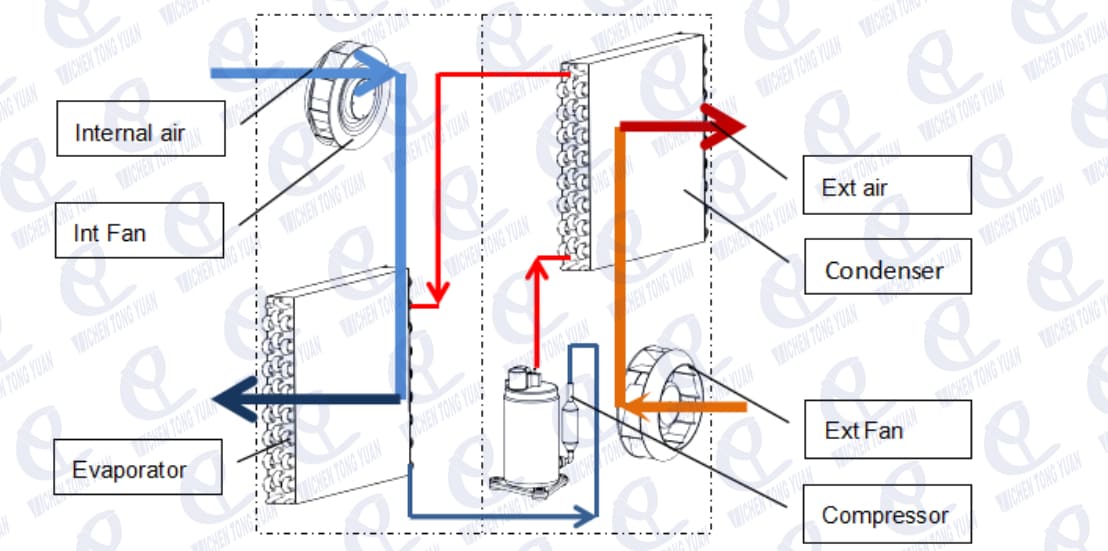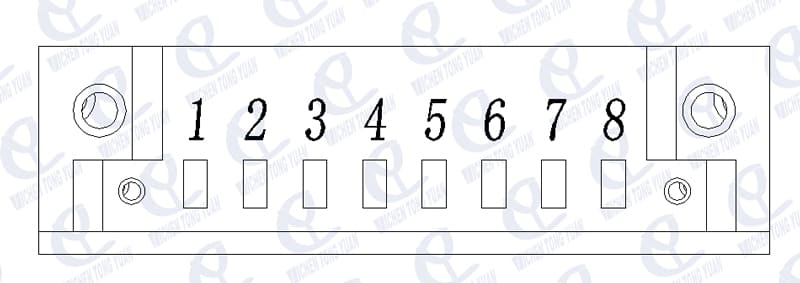Advantages of Industrial Small Enclosure Air Conditioners
Industrial small enclosure air conditioners are crucial for maintaining the safety and functionality of electronic and electrical components by protecting them from excessive heat, dust, and moisture. These cooling systems offer a range of benefits that improve performance, safety, and equipment longevity.
1. Prevents Overheating and Equipment Failure
Industrial enclosures house critical components such as circuit boards, controllers, and electrical wiring, which generate heat during operation. Without effective cooling, excess heat can cause:
Risks:
System Failures
Malfunctions
Costly Downtime
A small enclosure air conditioner dissipates heat effectively, ensuring stable operation and significantly reducing the risk of overheating.
2. Enhances Equipment Lifespan
High temperatures consistently reduce the lifespan of electronic components. By maintaining an optimal temperature inside enclosures, these air conditioners help:
Key Benefits:
Maintaining proper cooling helps ensure that industrial equipment remains functional for a longer period.
3. Improves Operational Efficiency
With consistent and stable temperatures, industrial machines and control systems can operate without thermal stress, leading to:
Operational Improvements:
Stable temperatures allow equipment to function efficiently, reducing operational hiccups and energy waste.
4. Protects Against Dust, Moisture, and Contaminants
In industrial environments, enclosures are often exposed to dust, dirt, oil, and humidity, which can damage sensitive electronics. Small enclosure air conditioners provide:
Protection From:
Dust
Moisture
Other Contaminants
By sealing the cooling system, they prevent contaminants from entering and ensure a clean, controlled environment inside the enclosure.
5. Energy-Efficient Cooling Solution
Modern small enclosure air conditioners use energy-efficient technology, offering effective cooling while reducing power consumption. This results in:
Key Advantages:
Energy-efficient models help businesses save on utility bills and contribute to sustainability efforts.
6. Compact and Space-Saving Design
Unlike traditional cooling solutions, small enclosure air conditioners are designed to fit in tight spaces, making them perfect for compact industrial setups. Their small size allows for:
Space-Saving Benefits:
Easy Integration into Control Panels
Seamless Installation in Automation Systems
No Need for Additional Space
Their compact design makes them ideal for environments with limited room for cooling equipment.
7. Easy Installation and Maintenance
Industrial enclosure air conditioners are designed for quick and easy installation. Many models offer:
Convenience Features:
These features reduce downtime and operational disruptions, ensuring that the cooling system is up and running with minimal effort.
8. Reliable Performance in Harsh Conditions
Industries such as manufacturing, telecommunications, and automation often operate under extreme conditions. These air conditioners are engineered to:
Withstand Harsh Conditions:
High Temperatures
Vibrations
Rough Environments
This ensures that the cooling system remains reliable and consistent, even in demanding industrial settings.
9. Reduces Downtime and Maintenance Costs
By preventing overheating and protecting against contaminants, enclosure air conditioners help minimize:
Reduction in:
Unexpected Breakdowns
Maintenance Efforts
Repair Costs
This reduces the overall operational downtime and enhances the longevity of the equipment.
10. Supports Compliance with Industry Standards
Many industries have strict regulations for temperature control and equipment protection. Small enclosure air conditioners help companies:
Compliance Benefits:
These air conditioners ensure that industrial operations adhere to required safety standards and best practices for equipment protection.
Conclusion
An industrial small enclosure air conditioner is a crucial investment for businesses looking to protect their sensitive equipment from overheating, dust, and environmental hazards. With benefits like improved efficiency, enhanced durability, and reduced downtime, these cooling solutions contribute to the overall reliability and performance of industrial systems. Whether in manufacturing, telecom, or automation industries, a high-quality enclosure air conditioner is essential for maintaining a stable and efficient working environment.






































